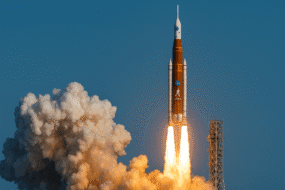June 2025 — Space, Time, and Everything In Between Just Got More Mysterious
In a mind-bending new discovery, scientists have unearthed patterns in the cosmos that may challenge everything we thought we knew about the universe. Using NASA’s James Webb Space Telescope (JWST), researchers from Kansas State University analyzed light from 263 ancient galaxies—some dating back to just 300 million years after the Big Bang—and noticed something stunning: over 60% of these galaxies appeared to spin in the same (clockwise) direction.
This uniform rotation goes against previous theories that assumed galaxy spin directions were random across the cosmos. The finding not only hints at a deeper cosmic structure but also supports an eye-opening hypothesis—that the entire universe may be inside a massive black hole.
If proven true, this radical theory would shake the foundations of astrophysics, forcing scientists to re-evaluate models of cosmic evolution, space-time, and even how the universe might end.
The implications are enormous. A universe with this level of directional alignment suggests some underlying force or condition that set galaxies spinning in a unified way—possibly linked to the very origins of the universe.
Yet, some scientists urge caution. Observational challenges, such as the Doppler effect, may have skewed the perceived spin of galaxies. These limitations could mean that the pattern is more illusion than reality. Researchers suggest further calibration of the JWST may be needed to confirm or refute the spin alignment data.
Regardless, the discovery reaffirms the James Webb Space Telescope’s critical role in expanding our understanding of the universe. As technology continues to evolve, it opens up new pathways to question, explore, and possibly even redefine the very reality we inhabit.
















